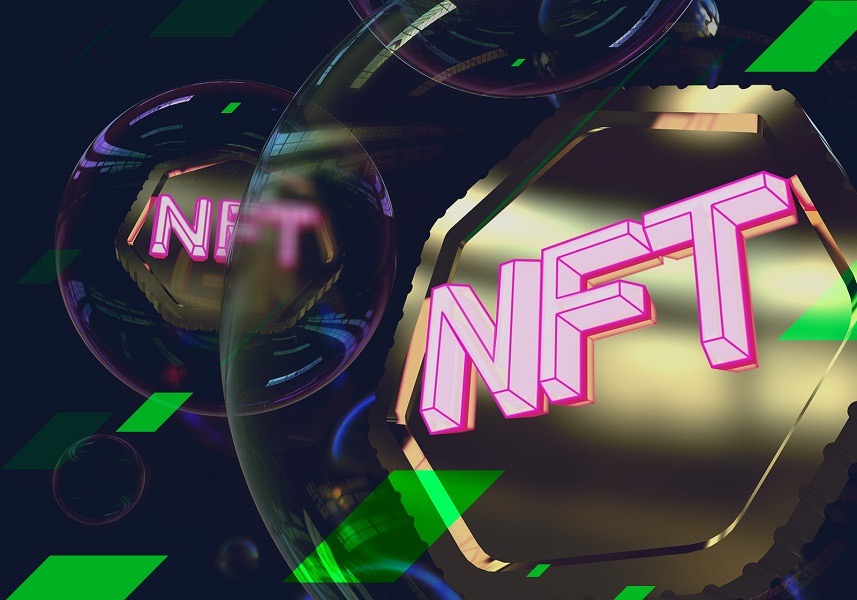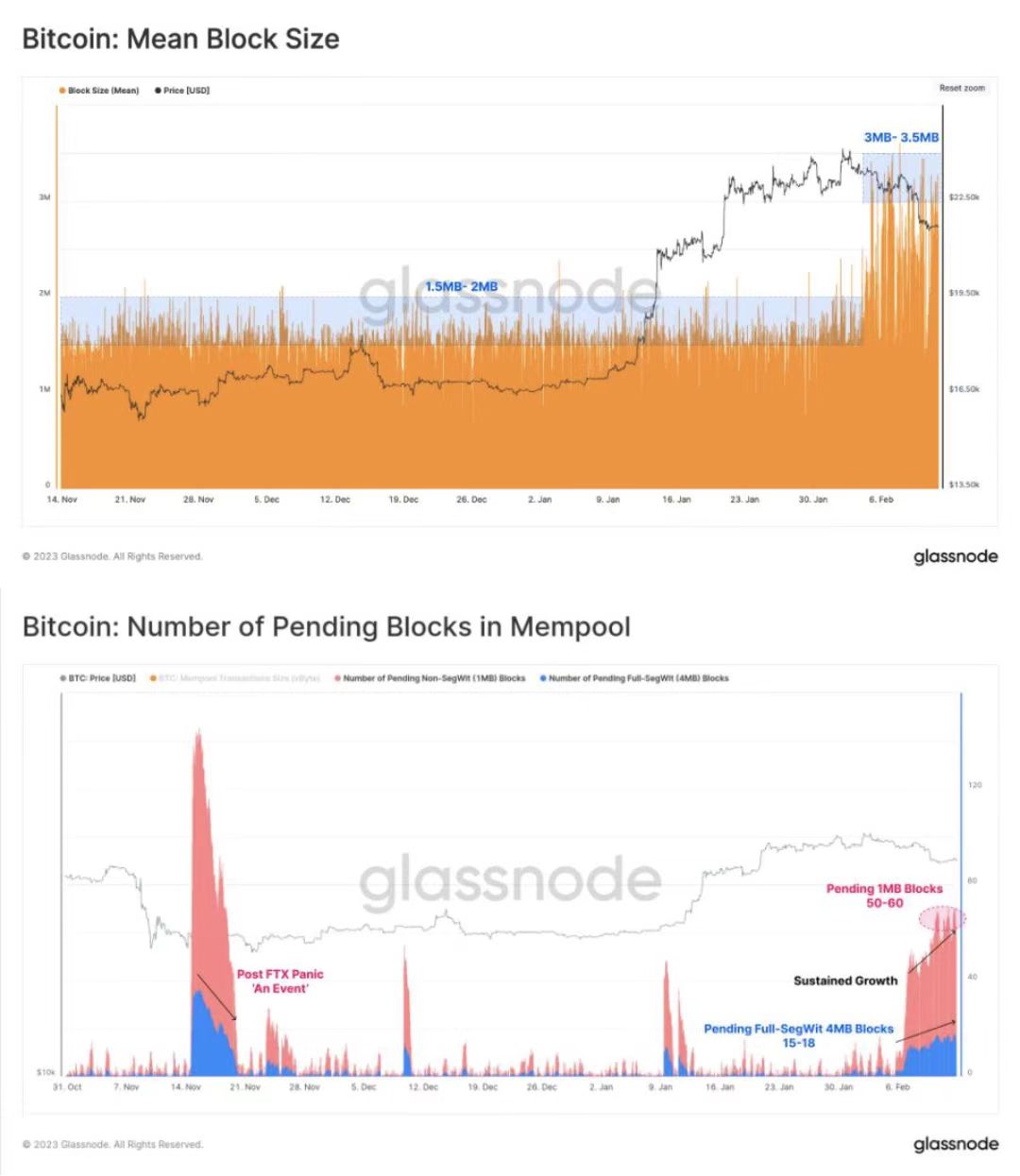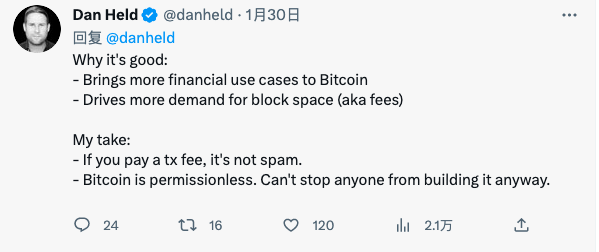
In the past two weeks, an NFT protocol called Ordinals has attracted much attention on the Bitcoin network.
Supporters believe that it provides more gameplay and network use cases, and enhances the application scenarios of Bitcoin beyond value storage; opponents criticize it, saying that it deviates from Satoshi Nakamoto's vision of using Bitcoin as a peer-to-peer (P2P) cash system, At the same time, it also leads to network congestion and increases Gas costs.
Despite the constant controversy, more and more projects have joined the Ordinals ecosystem. According to data from Dune Analytics, as of press time, the cumulative amount of NFTs minted by the Ordinals protocol has exceeded 100,000 (currently 118,002). In the past week, the cost of writing "Inscriptions" through the Ordinals protocol has exploded, reaching a total of 880,000 US dollars; 50% of the Bitcoin block space is occupied by "Inscriptions".
“This is 100% meme-driven development.” Casey Rodarmor, founder of the Ordinals protocol, said in an interview that the original intention of the project was to make the meme on Bitcoin more dynamic. Today, this meme cultural movement is profoundly changing the ecology of Bitcoin, the most classical public chain.
1. The NFT protocol on the Bitcoin mainnet
In mid-December last year, software engineer Casey Rodarmor released the NFT protocol "Ordinals" he created, but few people paid attention to it. It wasn't until the end of January this year that the situation changed - the Ordinals protocol released V4 and introduced "inscriptions" on the Bitcoin mainnet.
What is an "inscription"?Inscriptions are digital artifacts native to the blockchain. It is created by writing content to a satoshi (Satoshi, the smallest unit of bitcoin) using the Ordinals protocol, and can be viewed using the ordinals explorer. Inscription does not need to resort to separate tokens, sidechains, or change bitcoins.
The content of the inscription includes, image, text, SVG or HTML; the content is included in the transaction witness, which usually includes signatures and other data proving that the transaction is authorized. When mining, the inscription is inscribed on the first satoshi of the transaction's first output, distinguishing it from other satoshis by marking it.
According to the description of the Ordinals protocol document, all "satoshi" written into the NFT content can be saved or transferred to other Bitcoin addresses, and the transaction will display the inscription content on the Bitcoin blockchain. These contents are inextricably linked with "staoshi". The Ordinals protocol will turn these contents into an immutable "digital artwork" and allow users to track, transfer, store, buy, and sell.
To put it simply, the emergence of the Ordinals protocol allows project developers to store information on satoshi, the smallest unit of Bitcoin, without the need for other side chains, simplifying the issuance, transfer, and transaction of NFT on the Bitcoin chain.
The NFT narrative of the Bitcoin network has also given many "cloned" versions of well-known projects a sense of opportunity.First up is Bitcoin Punks - which claims to be the first project to successfully upload raw Ethereum CryptoPunks to the Bitcoin blockchain using Ordinals. Although the Mint operation steps are relatively cumbersome, all Bitcoin Punks were minted within a day, and it was once reported that the off-market price rose by 100 times, which greatly stimulated the rise of follow-up imitation projects.(Odaily Note: Currently the highest selling unit price of the Bitcoin Punks series listed on the Ordinals Market is 1.39 ETH, and the serial number is 2273.)
Immediately afterwards, projects such as OrdinalPenguins and ordrocks sprang up, and the number of Ordinal protocol’s daily minting grew explosively. According to data from Dune Analytics, on February 9, the Ordinals protocol’s NFT minting volume exceeded 20,000 (20,848) in a single day; as of press time, the cumulative NFT minting volume of the Ordinals protocol has exceeded 100,000 (118,002).
In addition to using well-known projects as a gimmick, some hardcore NFT players choose to directly destroy the Ethereum chain NFT and reissue new NFTs on the Bitcoin chain."Boring Ape" player Jason A. Williams posted on social media that the NFT community is turning to the Bitcoin blockchain, and the Ordinals protocol has brought true scarcity to digital collections, so he decided to use TeleBurn to permanently destroy BAYC on Ethereum# 1626, while minting it on the world's most scarce and secure blockchain, and will not return to Ethereum after that. BAYC#1626 is known to be minted as "Inscription 5413" on the Bitcoin blockchain.

This method is also imitated by the NFT infrastructure protocol CapsuleNFT, which launched the Bitcoin NFT series Ordinary Oranges that can be viewed and traded on the Ethereum mainnet; Ordinary Orange holders can destroy their NFTs on the Ethereum mainnet at any time, and The corresponding unique inscription (inscription) was obtained on the Bitcoin network, but the market did not buy it, and there is currently no transaction.
Compared with these unofficial and traffic-crazing clone projects, the fate of OnChainMonkey (probably to occupy a pit and prevent imitation) has really boosted the rise of the Bitcoin NFT wave. The project previously issued 10,000 NFTs on Ethereum, with a total transaction volume of more than 14,000 ETH, and now all of them are synchronized on the Bitcoin network. It is also the first well-known project to enter the Bitcoin NFT market in this round.
Just this afternoon,Gabriel Leydon, CEO of DigiDaigaku parent company Limit BreakTweeted that the Limit Break Bitcoin node is being set up, and Digi Genesis collectors will be able to get a Free Bitcoin NFT.DeGodsIt is said that 535 NFTs will be minted on the Bitcoin chain based on Ordinals.
2. Bitcoin Fundamentalism VS Pragmatism
The Bitcoin NFT wave promoted by the Ordinals protocol has also caused controversy in the Bitcoin community, with supporters and opponents fighting on social media.
Bitcoin fundamentalists believe that the emergence of NFTs deviates from Satoshi Nakamoto's vision of Bitcoin as a peer-to-peer cash system. Moreover, NFT may occupy block space on the Bitcoin network, which in turn will push up transaction fees.
image description

Bitcoin block size and mempool. Source: Glassnode
Of course, more opposition views still focus on the fact that NFT has damaged the original use case of Bitcoin. Some community members said that "allowing Bitcoin to be used for NFT is a bit like allowing hospitals to be used for carnival parties."
Blockstream CEO and Bitcoin core developer Adam Back believes that the original intention of Bitcoin is to resist censorship, so at least it should be used to do something meaningful instead of simply wasting network space resources. It is very stupid to issue Bitcoin NFT.
Bitcoin community KOL with nearly 300,000 followers「Bitcoin is Saving」It is believed that the NFT avatar is a privileged status symbol, and only those wealthy investors have the opportunity to obtain it. If the network fee increases significantly, it will inevitably exclude more marginalized people from the Bitcoin network, which is not conducive to promoting encryption adoption.

Supporters believe that the rise of Bitcoin NFT is to find new application scenarios outside of traditional value storage, providing Bitcoin with more gameplay and financial use cases. Ex-Kraken Executive, Bitcoin BullDan HeldThe rise of NFTs will drive demand for block space, which will increase fees — as long as you pay transaction fees, it’s not spam.

From the perspective of miners, the emergence of Bitcoin NFT also brings them a new way of income growth. According to the data on the chain, in the past week, the cost of writing "Inscriptions" (Inscriptions) through the Ordinals agreement has exploded, and the current total has reached 880,000 US dollars; especially on February 15, the single-day cost of the Ordinals agreement reached a new high, reaching $170,000, accounting for 24% of the total transaction fees on the Bitcoin network that day.
Summarize
Summarize
In the 14-year development history of Bitcoin, it has experienced round after round of innovation narratives. Now the emergence of Ordinals and inscriptions, linking this ancient public chain with fashionable digital artworks may lead to a big event out of the circle. Although the current surge in Bitcoin network activity, whether this trend can continue remains to be tested by time.
Inventory of 16 projects in the Bitcoin NFT protocol Ordinals ecology
Related Reading
Inventory of 16 projects in the Bitcoin NFT protocol Ordinals ecology